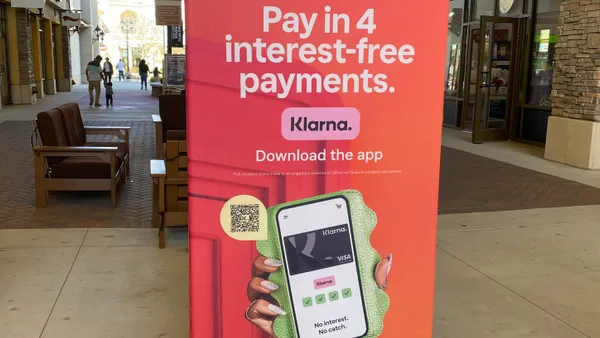A single-provider approach to payment processing quickly becomes obsolete when a business expands. Even if a single provider offers basic processing for a new geography, product line, or customer segment, it cannot provide the redundancy or customization required for long-term, scalable growth.
To meet the demands of global ecommerce — across borders, regulations, and payment preferences — high-performing companies increasingly partner with multiple payment service providers (PSPs) to efficiently manage global payments at scale.
While many businesses have built several integrations to payment service providers, many have learned the hard way that more connections do not always mean more success. On the contrary, a multi-PSP infrastructure invites new operational complexities and data fragmentation. As the number of direct integrations grows linearly, the complexity and cost of maintaining them grow exponentially. What’s more, building multiple integrations often creates a siloed and channel-specific architecture that lacks redundancy.
Fortunately, there’s a way to secure the benefits of the multi-PSP strategy — like greater reach and flexibility — without the drawbacks that erode revenue and extend time to market. The solution? Payment optimization through payment orchestration.
The Challenges of Multi-PSP Architectures
Multi-PSP connectivity is a logical step in expanding payment capabilities, but it’s not a silver bullet. Integrating, maintaining, and troubleshooting multiple PSP connections requires significant IT resources. When combined with regulatory compliance, security requirements, and data standards across regions, an in-house payments stack becomes a resource-hungry system.
Let’s break down why these costs tend to scale beyond the number of integrations:
- More integrations not only lead to increased demands on developer resources, but also extended project timelines and higher maintenance costs.
- With more providers, businesses need advanced monitoring tools to identify and eliminate redundant costs.
- Building in-house routing logic and dynamic checkout becomes more complex as providers are added, especially when adapting for multiple languages, currencies, and payment methods.
- When payment data is scattered across various platforms, merchants struggle to make sense of siloed data sources, creating the need for standardized data.
- Post-processing requirements often grow across multiple providers, such as reconciling data for CMS, ERP, TMS, and other business systems.
Building a Resilient Multi-PSP Strategy with Redundancy and Intelligent Routing
Redundancy is at the core of a true multi-PSP approach. Multiple-PSP architectures that don’t offer overlap are missing a crucial benefit. A reliable payment stack ensures a consistent customer experience, minimizes lost sales, and reduces payment declines.
Once functional redundancy is built in, a strong routing layer will improve payment outcomes. The most successful multi-PSP strategies incorporate intelligent routing and a rules-based framework to ensure every transaction is processed as efficiently as possible.
Without optimized routing, failed payments add up, and firms have trouble developing and testing routing strategies to amplify success. This problem is exacerbated for global enterprises that need to consider localized payment methods, dynamic checkout strategies, and diverse cardholder preferences.
The Smarter Approach: Payment Orchestration
The number of payment integrations in a company’s tech stack is only one side of the coin—the real value is in the interplay created with these tools. That’s where payment orchestration comes in.
Businesses that use payment orchestration platforms can tap into specialized payment solutions and routing channels through a single integration, bypassing the drawbacks of a multi-PSP stack while securing its benefits. There are two key ways in which payment orchestration improves the traditional multi-PSP approach:
- First, payment orchestration platforms use dynamic routing, automated retries, and AI-based recommendations to optimize transaction paths and resolve failed payments. These solutions work hard behind the scenes to get more transactions approved at the lowest cost.
- Second, payment orchestration solves data management challenges. Because data is unified within a single platform, humans and built-in AI tools can detect business insights and fraud patterns that would otherwise fly under the radar. This data centralization also makes it easier for businesses to reconcile transactions and manage customer life cycles.
Expansion Plus Optimization Equals Better Outcomes
If payment providers are the suppliers of transacting capabilities, payment orchestration is the intelligent infrastructure that connects and optimizes them.
Payment orchestration transforms a fragmented payment ecosystem into a streamlined, dynamic network where businesses can plug in best-fit providers, route transactions intelligently, and respond to market demands in real time. It turns payments into a strategic lever — driving higher approval rates, reducing costs, and delivering better customer experiences.
For modern merchants, payment orchestration isn’t just a tool. It’s the foundation of a scalable, future-ready commerce strategy.
Brady Harris, a visionary FinTech Executive, has over two decades of experience leading high-growth financial technology and SaaS companies. As CEO, he is dedicated to advancing global payment solutions. Harris employs a hands-on leadership style, focusing on operational excellence and strategic growth initiatives. During his tenure at Dwolla and Payscape, he oversaw significant increases in payment volumes and user engagement and fostered cultures that prioritize agility, high performance, and alignment with core values. Additionally, his expertise in mergers, acquisitions, and scaling companies to successful exits is key as IXOPAY positions itself to become the one-stop payment industry solution. Harris's commitment is not only to enhance enterprise value but also to empower his teams and clients in the evolving digital payments landscape.










